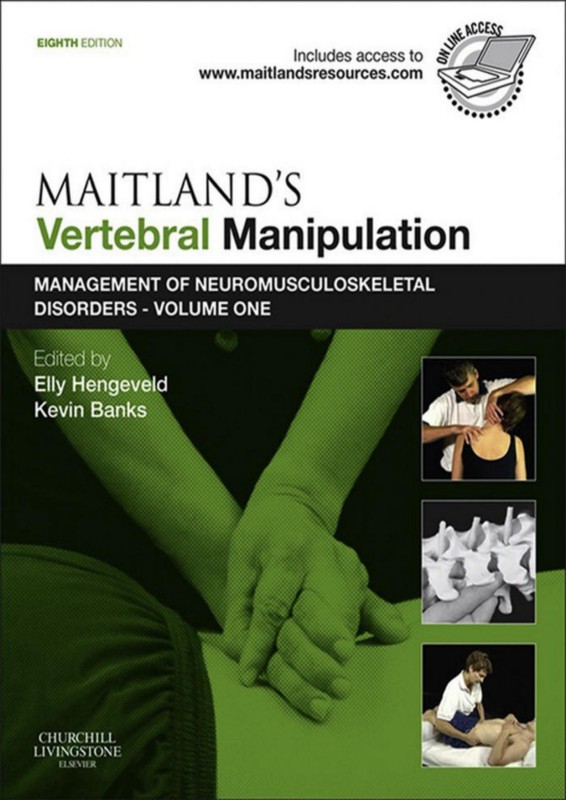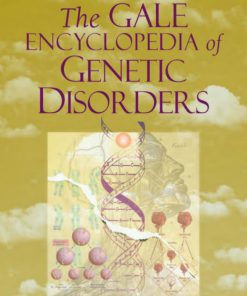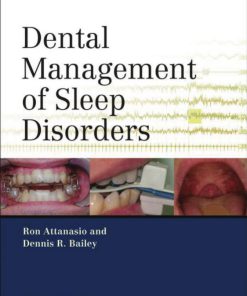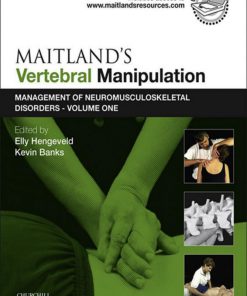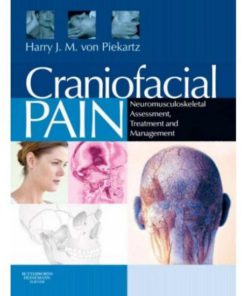Maitland Vertebral Manipulation Management of Neuromusculoskeletal Disorders Volume 1 8th Edition by Elly Hengeveld, Kevin Banks ISBN 9780702054587 0702054585
$50.00 Original price was: $50.00.$25.00Current price is: $25.00.
Authors:Volume 1-Churchill Livingstone (2013) , Author sort:Livingstone, Volume 1-Churchill , Ids:9780702054587 , Languages:Languages:eng , Published:Published:Aug 2013 , Publisher:Elsevier Health Sciences
Maitland Vertebral Manipulation Management of Neuromusculoskeletal Disorders Volume 1 8th Edition by Elly Hengeveld, Kevin Banks – Ebook PDF Instant Download/Delivery. 9780702054587 ,0702054585
Full download Maitland Vertebral Manipulation Management of Neuromusculoskeletal Disorders Volume 1 8th Edition after payment

Product details:
ISBN 10: 0702054585
ISBN 13: 9780702054587
Author: Elly Hengeveld, Kevin Banks
The legacy of Geoff Maitland and his seminal work, Vertebral Manipulation, continues in this eighth edition, with Elly Hengeveld and Kevin Banks leading an international team of experts who demonstrate how to manage vertebral neuromusculoskeletal disorders using the principles and practice of the Maitland Concept. Together, they ensure the heart of the Concept beats on by promoting collaborative decision-making with the patient at centre and emphasizing the art and science of observation, listening, palpation and movement skills.
A key feature of the new edition focuses on a more evidence-based and analytical view of the role of mobilization and manipulation in clinical practice The authors have written in a way that reflects their application of the Maitland Concept and how they have integrated techniques in the light of advancement in professional knowledge. Each chapter stands alone as a ‘master class’.
The text is systematically arranged focusing on detailed assessment, clinical reasoning and re-assessment to determine the physical dysfunction and efficacy of manipulative physiotherapy techniques, while also advocating continuous communication and interaction. Techniques of passive mobilization are also described, specifically designed around the individual patient’s condition.
All the chapters are written from a clinical perspective and review the evidence which informs how to deal with and manage spinal and pelvic pain as they present to the practitioner. Furthermore, each vertebral region (cervical, thoracic, lumbar, sacroiliac/pelvic) is considered from the point of view of best practice in analysing and hypothesising subjective data, examination, treatment and management of spinal pain conditions.
Brand new to the eighth edition is the addition of a companion website – Maitland’s Manipulation eResources (www.maitlandsresources.com) – providing access to a range of valuable learning materials which include videos, MCQs, interactive case studies, research links, and bonus chapters
Maitland Vertebral Manipulation Management of Neuromusculoskeletal Disorders Volume 1 8th Edition Table of contents:
Chapter 1: The Maitland Concept: Assessment, examination and treatment of movement impairments by passive movement
A personal commitment to the patient
A mode of thinking: the primacy of clinical evidence
Techniques
Examination
Assessment
Conclusion
Chapter 2: Clinical reasoning: From the Maitland Concept and beyond
Introduction
Clinical reasoning and evidence-based practice
Critical thinking and clinical reasoning
Importance of skilled clinical reasoning to expert practice
Clinical reasoning and the bio-psychosocial model of health and disability
Clinical reasoning as a hypothesis-oriented and collaborative process
Clinical reasoning and knowledge
Clinical reasoning and cognition/metacognition
Skilled questioning important to critical thinking and learning
Skilled questioning important to clinical practice
Facilitating application of bio-psychosocial practice: clinical reasoning strategies and hypothesis categories
Hypothesis categories
Pattern recognition
Complexity of clinical reasoning
Errors of clinical reasoning
Improving clinical reasoning: learning through clinical reasoning
We are all imposters
Chapter 3: Communication and the therapeutic relationship
Introduction
Therapeutic relationship
Communication and interaction
The process of collaborative goal setting
Critical phases of the therapeutic process
Verbatim examples
Conclusion
Chapter 4: Management of cervical spine disorders: A neuro-orthopaedic perspective
Chapter 5: Management of thoracic spine disorders
Chapter 6: Management of lumbar spine disorders
Introduction
Demedicalization and conceptualization of NSLBP
Scope of practice of physiotherapists regarding NSLBP
Clinical reasoning
Examination of the lumbar spine: subjective examination
Physical examination
Passive accessory intervertebral movements (PAIVMs)
Examination of motor control impairment
Mobilization and manipulation treatment techniques
Case studies
Chapter 7: Management of sacroiliac and pelvic disorders
Introduction
Applied theory and evidence supporting practice
Clinical reasoning
Subjective examination
Planning of the physical examination (‘structured reflection’)
Physical examination
Treatment
Common clinical presentations
Chapter 8: Sustaining functional capacity and performance
Introduction
Role of passive movement in promotion of active movement and physical activity
Functional restoration programmes and self-management
Cognitive behavioural principles
Conclusion
Chapter 1: The maitland concept: Assessment, examination and treatment of movement impairments by passive movement
Chapter 2: Clinical reasoning: From the Maitland Concept and beyond
Chapter 3: Communication and the therapeutic relationship
Chapter 4: Management of cervical spine disorders: A neuro-orthopaedic perspective
Chapter 5: Management of thoracic spine disorders
Chapter 6: Management of lumbar spine disorders
Chapter 7: Management of sacroiliac and pelvic disorders
Chapter 8: Sustaining functional capacity and performance
Peripheral manipulation
Appendix 1: Movement diagram theory and compiling a movement diagram
Appendix 2: Clinical examples of movement diagrams
Appendix 3: Examination refinements and movement diagrams
Appendix 4: Recording
Index
People also search for Maitland Vertebral Manipulation Management of Neuromusculoskeletal Disorders Volume 1 8th Edition:
maitland vertebral manipulation pdf
maitland’s vertebral manipulation 8th edition
spinal manipulation vs mobilization
types of spinal manipulation
You may also like…
eBook PDF
Pathology of DOMESTIC ANIMALS Volume 1 6th edition by Grant Maxie ISBN 0702053171 978-0702053177
eBook PDF
Dental Management of Sleep Disorders 1st Edition by Ronald Attanasio, Dennis Bailey 9781118701102
eBook PDF
Gale Encyclopedia of Cancer Volume 1 4th Edition by Cengage Gale ISBN 1410317404 9781410317407

